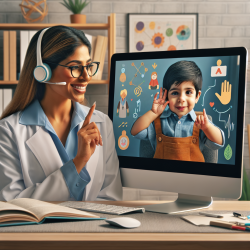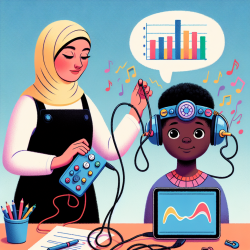Telepractice has become an essential tool in delivering early intervention (EI) services to families of children who are deaf or hard of hearing (D/HH). A recent research article titled "Provider Perspectives on Telepractice for Serving Families of Children Who are Deaf or Hard of Hearing" offers valuable insights for practitioners looking to improve their telepractice skills. This blog aims to summarize the key findings of this research and provide actionable recommendations for practitioners.
Key Findings from the Research
The research involved a survey of 27 telepractice providers from 11 different programs, focusing on their experiences, challenges, and strategies. Here are some critical takeaways:
- Variability in Hardware and Software: There was significant variability in the hardware and software used by providers and families. While many used Macs and iPads, others used PCs and tablets. This variability can impact the quality and consistency of telepractice sessions.
- Connectivity Issues: Internet connectivity was a primary challenge, with many providers reporting issues related to video and audio quality. This is particularly problematic in rural areas where high-speed internet is less accessible.
- Training and Support: Most providers received training from their employers or were self-taught. There is a need for more systematic and comprehensive training programs to prepare practitioners for telepractice.
- Technological Support: The availability and adequacy of technical support varied widely. Only 23% of respondents reported that technical support was always available, highlighting the need for better support systems.
- Telepractice Strategies: Providers often conducted in-person visits before starting telepractice to establish rapport and understand the family's needs. However, this was not always feasible, especially for families in remote areas.
Recommendations for Practitioners
Based on these findings, here are some recommendations for practitioners to improve their telepractice skills:
- Standardize Hardware and Software: Where possible, standardize the hardware and software used to minimize variability and improve the quality of sessions. Consider creating a loaner library for families who may not have access to the required technology.
- Enhance Connectivity: Advocate for better internet services for families, especially those in rural areas. Consider subsidizing internet costs for low-income families to ensure consistent service quality.
- Invest in Training: Seek out comprehensive training programs that cover both technological and therapeutic aspects of telepractice. Training should include troubleshooting common technical issues and using advanced features like screen sharing.
- Provide Robust Technical Support: Ensure that technical support is readily available to both providers and families. This could include on-call support and detailed troubleshooting guides.
- Flexible Initial Meetings: While in-person meetings are ideal for establishing rapport, be flexible and use video calls if in-person visits are not feasible. The goal is to make the family comfortable and confident in using telepractice.
Encouraging Further Research
The field of telepractice is continually evolving, and ongoing research is crucial for its improvement. Practitioners are encouraged to participate in research studies and share their experiences to contribute to the collective knowledge. This collaborative approach will help address the challenges and optimize the benefits of telepractice.
To read the original research paper, please follow this link: Provider Perspectives on Telepractice for Serving Families of Children Who are Deaf or Hard of Hearing.










